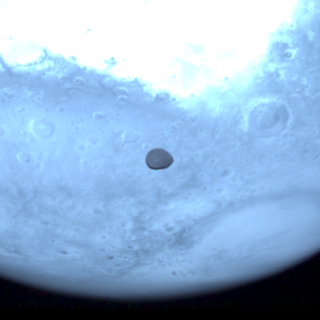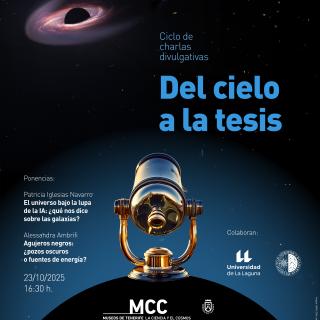Miembros de la colaboración Consolider-GTC han logrado confirmar datos relacionados con las características de diez estrellas de baja masa y enanas marrones gracias a observaciones llevadas a cabo con el instrumento OSIRIS, instalado en el Gran Telescopio CANARIAS (GTC). Los datos fueron tomados en diferentes noches de observación durante el mes de marzo de 2012. OSIRIS obtuvo espectros de baja resolución de estos objetos en el joven cúmulo estelar abierto de sigma Orionis, cercano a la famosa Nebulosa de la Cabeza de Caballo.
El objetivo de este programa era aprovechar las noches en las que las condiciones no son óptimas para otros programas de observación (como un "seeing" alto o presencia de nubes densas) con el fin de obtener espectros de gran calidad de fuentes variables sin clasificación conocida que fueran relativamente brillantes para un telescopio de tipo 10 metros. Algunos de los espectros obtenidos durante una de las noches de observación fueron captados mientras el resto de telescopios de La Palma no estaban operativos.
Con este trabajo se han logrado desvelar datos detallados de siete objetos, como su clasificación espectral o la intensidad de las líneas de litio en absorción, y de hidrógeno y calcio en emisión. Mientras que el tipo espectral es un indicador de temperatura y masa, las líneas espectrales mencionadas son marcadores de juventud extrema y de acreción, que es la caída violenta de material sobre la superficie de la estrella desde un disco que la rodea. Todas las estrellas y enanas marrones cumplían un requisito: que fueran objetos variables conocidos en el óptico o en rayos X. Algunos de los objetos caracterizados han resultado ser muy interesantes, como la enana marrón Mayrit 1196092, que posee características que hasta hace poco se creían exclusivas de cierto tipo de estrellas jóvenes y activas llamadas T Tauri.
Este estudio forma parte de dos proyectos: uno es el estudio espectroscópico con OSIRIS/GTC de fuentes variables poco conocidas, y el otro es el proyecto Mayrit, cuyo objetivo es catalogar en detalle todos los cuerpos pertenecientes al cúmulo sigma Orionis, que es un auténtico laboratorio de formación estelar. Todas las estrellas y enanas marrones de este catálogo tienen el nombre Mayrit y un número que indica su posición en el cúmulo. Mayrit es la palabra que evolucionó para dar luego nombre a la ciudad de Madrid.
Pese a los numerosos trabajos llevados a cabo con anterioridad, muchos de ellos realizados por astrónomos españoles, aún hay docenas de estrellas de baja masa y enanas marrones en sigma Orionis sin una caracterización espectroscópica detallada. Algunas de ellas pueden incluso estar acretando material o tener discos aún no detectados, discos en los que quizá se estén formando planetas.
Este estudio ha sido desarrollado por José Antonio Caballero, investigador del Centro de Astrobiología (CSIC-INTA), y miembro Consolider-GTC del equipo PLANETAS-IAC; Antonio Cabrera-Lavers, investigador del Instituto de Astrofísica de Canarias (IAC), astrónomo de soporte del GTC y miembro Consolider-GTC del equipo EAST; David García Álvarez, astrónomo de soporte de GTC e investigador del IAC; y Sergio Pascual, investigador del Departamento de Astrofísica y Ciencias de la Atmósfera de la Facultad de Física de la Universidad Complutense de Madrid (UCM), y miembro Consolider-GTC del equipo GALAXIAS-UCM.
Qué es Consolider-GTC
"Primera Ciencia con el GTC: La Astronomía Española en Vanguardia de la Astronomía Europea", es un proyecto global coordinado por el investigador José Miguel Rodríguez Espinosa, del Instituto de Astrofísica de Canarias (IAC), financiado por el Ministerio de Economía y Competitividad, MINECO (cofinanciado por la Unión Europea a través del Fondo Europeo de Desarrollo Regional FEDER) y basado en el Gran Telescopio CANARIAS (GTC) -el mayor telescopio óptico-infrarrojo del mundo- cuya intención es impulsar la astronomía española, poniéndola en la vanguardia de la astronomía europea.
Más información: Página web del proyecto Consolider-GTC
Contacto:
- José A. Caballero, Centro de Astrobiología (CSIC-INTA): caballero [at] cab.inta-csic.es (caballero[at]cab[dot]inta-csic[dot]es)
- David García Álvarez, GRANTECAN (Gran Telescopio Canarias): david.garcia [at] gtc.iac.es (david[dot]garcia[at]gtc[dot]iac[dot]es)



